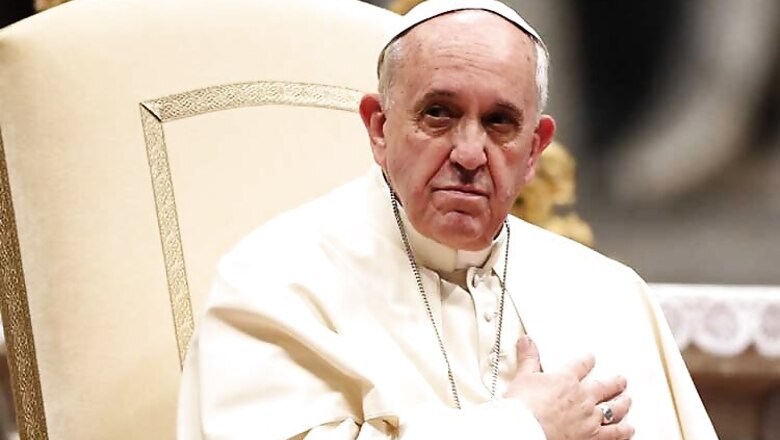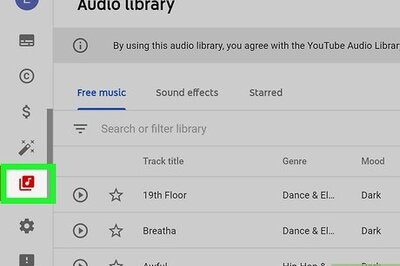
views
Caacupe,Paraguay: When Marta Noella was a girl, she says she was frequently beaten by her strict father. At 14, she was so depressed she planned to kill herself by stepping in front of a car.
What happened next she attributes to a miracle from the Virgin of Caacupe, whose shrine is the most important pilgrimage site in Paraguay and will be the site of Pope Francis' Mass on Saturday.
"I felt the presence of God and right then I decided I wanted to live," said Noella, now a 23-year-old university student who spent the night standing near the basilica in hopes of getting a look at Francis when he arrives.
The Caacupe shrine, which houses a little wooden statue of the Virgin Mary, is close to Francis' heart. When he was archbishop of Buenos Aires, he often visited the Villa 21 slum where many Paraguayan immigrants live, joining them in their religious processions and celebrating baptisms at their church, Our Lady of Miracles of Caacupe. On Saturday, he'll celebrate Mass at the original Caacupe shrine. Hundreds of thousands are expected to attend.
On Friday night, tens of thousands had already arrived. Many brought chairs and blankets, sitting and lying down in the square and along the street where Francis is to arrive. Youth groups chanted "Pope Francis, Paraguay is with you!" Elderly Paraguayans periodically kneeled on the cement to pray. During periodic bursts of rain, the faithful pulled out plastic ponchos and umbrellas, passing around sweets and sipping on mate tea to stay warm.
Maria Luisa Gonzalez, 54, sat with her husband and prayed. She recounted how, when she was 8 years old, she had a terrible stomachache that persisted for a few weeks. The day her parents decided to take her to a doctor, she saw a painting of the Virgin of Caacupe hanging on a street vendor's cart.
"I immediately felt so much better that we didn't go to the appointment," she said. "After that, I believed in the Virgin's miracles, and I have been coming every year to give thanks since I was 15."
Tradition has it that the Virgin was carved by a Guarani man named Jose, by many accounts an early convert to Christianity around the beginning of the 17th century. Francis' Jesuit order and their Franciscan brothers were both evangelizing the region and created settlements that gave local Indians unusual autonomy.
According to lore, Jose was carrying a load of wood back to his settlement when he spotted a rival group that was fighting the incursion of Christianity and killing converts. He hid behind a tree and prayed to the Virgin, promising to carve a statue of her out of it if he was not spotted. His escape is considered the first of many miracles in what would become the religious center of this poor nation of 6.8 million sandwiched between Bolivia, Argentina and Brazil.
While Christianity is under siege by secularism and evangelicals in much of the hemisphere, Paraguay remains overwhelmingly Catholic. Eighty-nine percent here profess the faith, according to the Pew Research Center.
The country's indigenous roots remain powerful as well. Even wealthy Paraguayans of European lineage take pride in speaking Guarani, and Francis is likely to emulate the example of Pope John Paul II, who used that language to greet the faithful in 1988, the last time a pope visited.
For years, Francis has had a self-professed soft spot for Paraguay. That affection was on display Friday afternoon as he arrived in Asuncion on the final leg of his three-nation tour of South America's poorest countries that included Ecuador and neighboring Bolivia.
He praised the Paraguayan women who were so critical to the country's recovery from a regional war in the 1860s that wiped out more than half of the population, most of it male. He encouraged Paraguay's moves toward a stable democracy and economic growth after the violent 1954-1989 dictatorship of Alfredo Stroessner. And he called for "unceasing efforts" to crack down on corruption.
His message on Saturday is expected to be more pastoral, joining the thousands of pilgrims who travel to Caacupe each year to pray before the icon of the Madonna. He may see some familiar faces: Some 200 Villa 21 residents travelled days by bus to greet their former pastor at the Caacupe shrine so dear to them both.
"There are kids, adults, families," the trip organizer, the Rev. Lorenzo de Vedia, said in Buenos Aires earlier this week. "The pope is someone who is very loved here, for the people of the villa he's one of them because we shared first communions, confirmations, baptisms."
Vatican spokesman the Rev. Federico Lombardi confirmed that Francis insisted on going to Caacupe "because he has this personal connection to the Virgin of Caacupe thanks to his pastoral work" in Buenos Aires.
For faithful braving the cold Friday night, that Francis chose to come to Paraguay was a blessing.
"Other family members have experienced miracles, but I haven't yet," said Arsenio Franco, a 24-year-old police officer. "I want to see the pope, and I hope to live a miracle."













Comments
0 comment